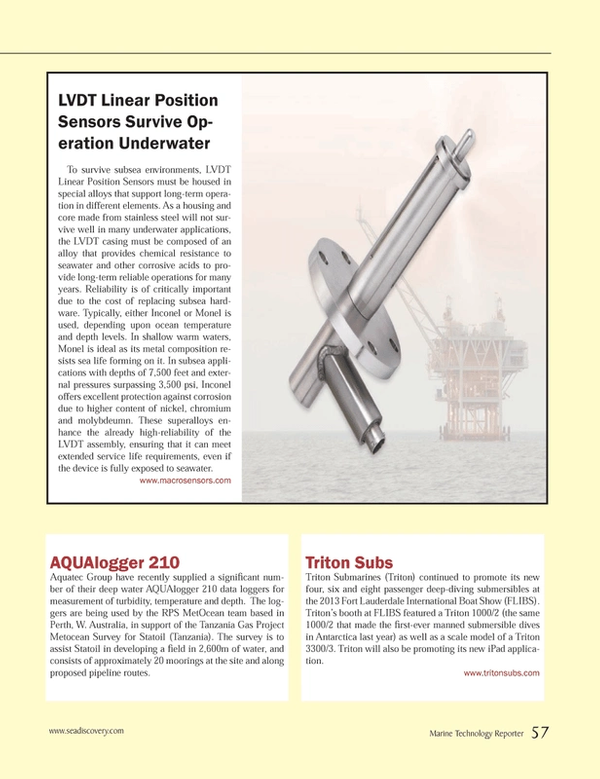
LVDT Linear Position Sensors Survive Operation Underwater
To survive subsea environments, LVDT Linear Position Sensors must be housed in special alloys that support long-term operation in different elements. As a housing and core made from stainless steel will not survive well in many underwater applications, the LVDT casing must be composed of an alloy that provides chemical resistance to seawater and other corrosive acids to provide long-term reliable operations for many years. Reliability is of critically important due to the cost of replacing subsea hardware. Typically, either Inconel or Monel is used, depending upon ocean temperature and depth levels. In shallow warm waters, Monel is ideal as its metal composition resists sea life forming on it. In subsea applications with depths of 7,500 feet and external pressures surpassing 3,500 psi, Inconel offers excellent protection against corrosion due to higher content of nickel, chromium and molybdeumn. These superalloys enhance the already high-reliability of the LVDT assembly, ensuring that it can meet extended service life requirements, even if the device is fully exposed to seawater.
www.macrosensors.com
(As published in the November/December 2013 edition of Marine Technology Reporter - www.seadiscovery.com)
Read LVDT Linear Position Sensors Survive Operation Underwater in Pdf, Flash or Html5 edition of November 2013 Marine Technology
Other stories from November 2013 issue
Content
- Help Build the "Space Station of the Sea" page: 10
- Makai Continues Energy Research in Hawaii page: 12
- Fugro’s Offshore Wind Farm Drill Ready page: 14
- Dr. Jennifer Brower, Prometheus page: 18
- Bourbon: Offshore Seismic Survey Vessel Success page: 22
- The Rise of the Work-class ROV Market page: 30
- Brazil Offshore: Petrobras & Subsea Engineering page: 34
- Offshore Energy: Monitoring Performance page: 42
- Sea Owl ROV Revamped page: 56
- New SediMeter Features Integral Cleaner page: 56
- MacArtney Updates MERMAC ROV Winches page: 56
- Project Launched to Better Detect Ocean Ice Hazards page: 56
- New AQUAlogger Aids Ocean Data Recording page: 57
- Triton Subs in Fort Lauderdale page: 57
- LVDT Linear Position Sensors Survive Operation Underwater page: 57
- Vectron Measures Tide Speeds page: 58
- Kraken Debuts AquaPix MINSAS page: 58
- Updated SeaLite Sphere LED Light page: 58
- OSIL Launches Fracking Water Monitor page: 59
- Stand-Alone Mosaicking Module Introduced page: 59
- OSIL Giant Snow Catchers Used for NERC Research page: 59
- Immersion Suit Drying System Ordered page: 59


